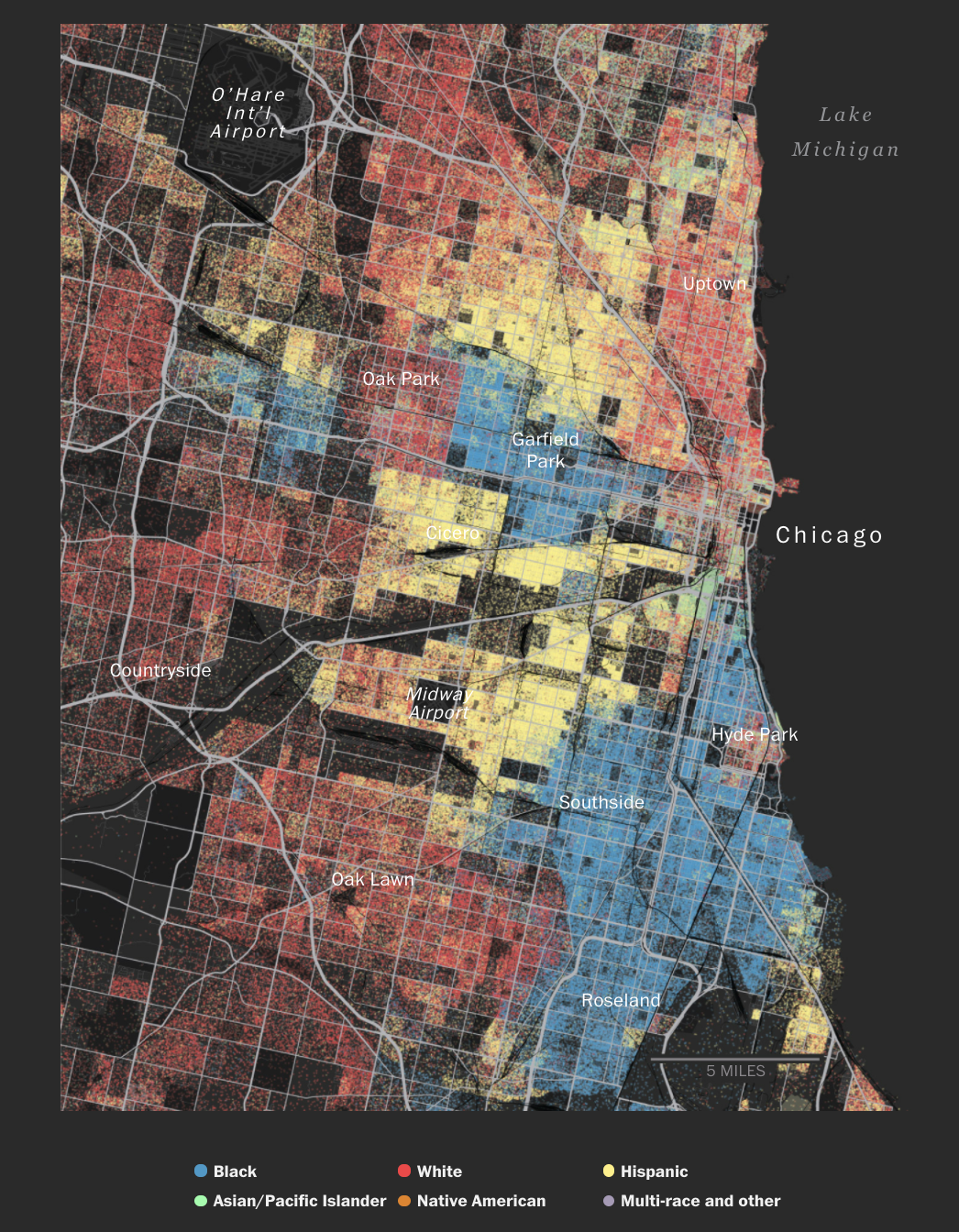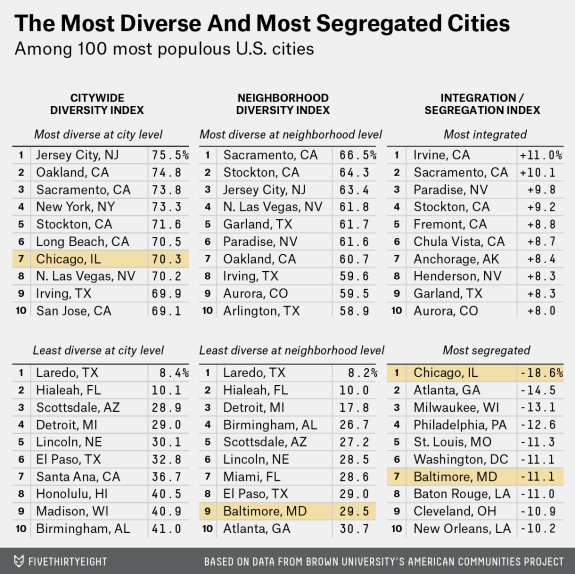“If we reduced the levels of economic and African American-white segregation to the national median incomes for African Americans in the Chicago region would rise an average of $2,982 per person per year. The region as a whole would earn an additional $4.4 billion in income.” (Metropolitan Planning Council 2017, 4)
“83,000 more people in the Chicago region would have bachelor’s degrees if we reduced the level of segregation between African Americans and whites to the national median.” (Metropolitan Planning Council 2017, 8)
"Folded Map project analyzes Chicago's segregation" (Chicago Sun Times 2018)
“Chicago Urban League Research and Policy Executive Director Stephanie Schmitz Bechteler noted that segregation remains today almost everywhere that saw an influx of African-Americans from the South during the Great Migration.” (Chicago Tribune 2018)

“America is more diverse than ever--but still segregated” (The Washington Post 2018)

(FiveThirtyEight 2015)